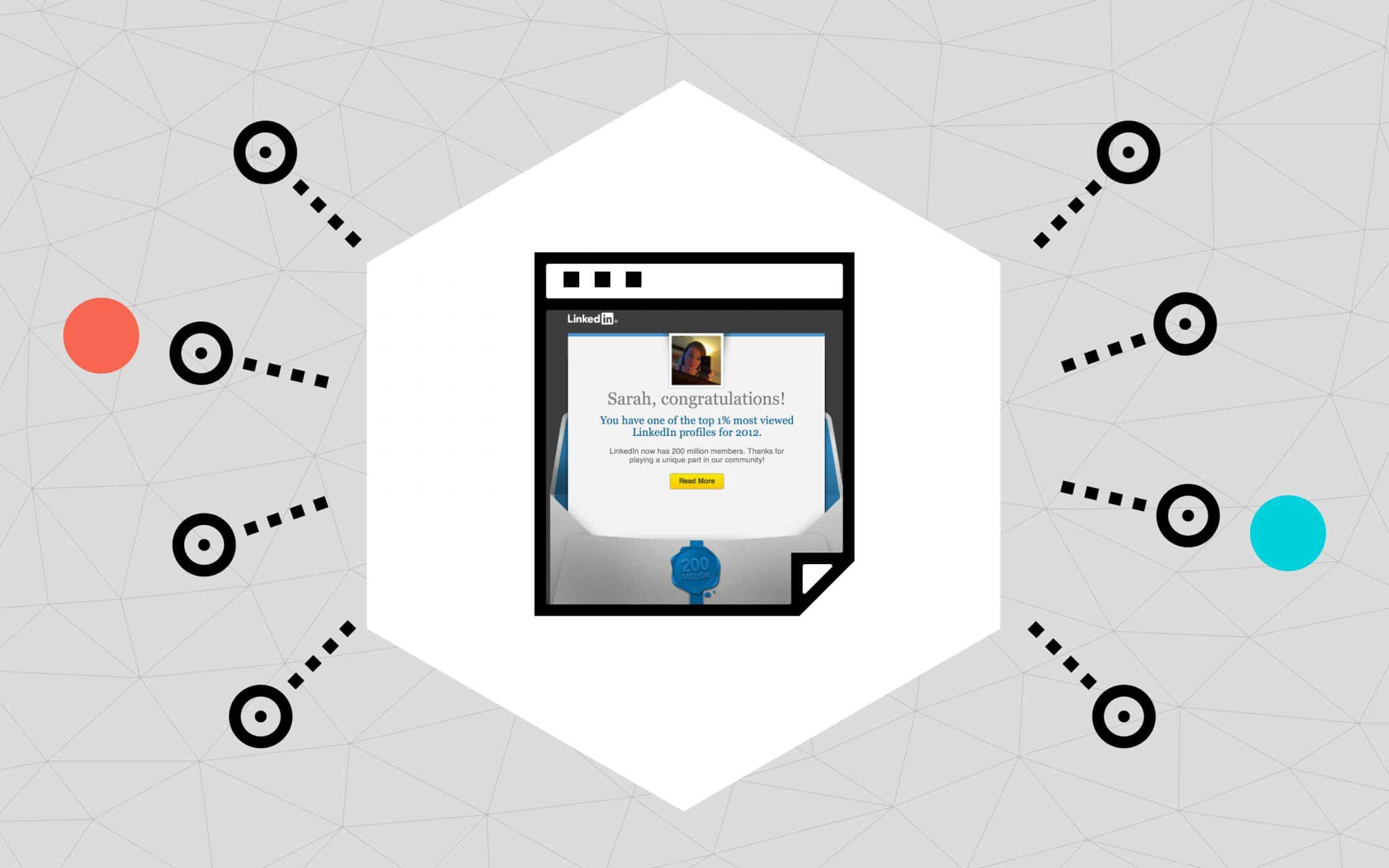How to make content go viral: Tips for truly contagious viral content

Let’s face it, getting the attention of your target audience isn’t easy in today’s marketing environment.
While it’s true that we have more strategies for digital engagement than ever before, the average business also has significantly more competition to worry about too. In a world that’s packed-full of brands that seem to offer the same products and services, customers are growing tired of the old-fashioned advertising of days gone past. They block pop-ups on their desktops, ignore spam calls, and send emails straight to spam.
So, how are budding companies supposed to get brand recognition?
One solution could come from developing viral content. Viral marketing is a way of connecting with audiences through some kind of “X factor” that helps you to inspire, engage, and move your audience. While anyone can invest in content marketing, few people know what it takes to create truly infectious interactions with their audience.
While there’s never any guarantee that your podcast, blog, or video will go viral – despite your promotional efforts, there are signs that suggest certain strategies may be more effective than others when creating “buzz” for your campaign. With that in mind, we’re going to take a look at how to make content go viral, and what you can do to make your company more contagious.
Let’s get started.
What is viral content?
There are plenty of viral content examples out there that show virality is possible, but before we can give you a framework for how to make content go viral, it’s important to define what viral marketing actually is.
No matter which industry you’re in, viral content is the solution that gives your business real, sustainable online presence. The secret to success online is making sure that as many people see your brand as possible. However, the path to profit isn’t always straightforward. The face of marketing is fluid, with social and SEO algorithms constantly in flux.
The good news is, no matter what else changes in the marketplace, human behaviour and psychology are still predictable, and capable of being leveraged. Viral content is infectious because it appeals to human emotion. Knowing how to influence your customers through psychological strategies, could lay the path for real brand awareness.
Before we get started, remember that all viral content should be:
1. Emotional
There’s a great study called “What Makes Online Content Viral”, that can be helpful for growing businesses. The researchers in this study analysed about 7,000 New York Times articles, and found that one of the key factors in all viral articles was the presence of “high-arousal emotions”. In other words, viral content is something that sparks feeling in your audience, from anger and fear, to awe and excitement. Importantly, “strong” emotions are more effective than passive emotions like sadness or contentment.
2. Practical
Great content has a purpose. If your content has value, either by being educational, informative, or entertaining, it’s more likely to be shared. People like to share useful content with others because it makes them feel altruistic. That’s why “how-to” content and listicles perform so well. If you make your content practical and actionable, then you’ll end up with a stronger chance of going viral.
3. Readable
Any content is readable if you try hard enough. However, viral content should be naturally engaging and simple to interact with. Run your work through a test for readability. Most experts suggest that if you want to appeal to a broad audience, you’ll need to aim for a comprehension level of about tenth grade or lower – year 11 or below, to those of us in the UK.
4. Powerful
The quest for viral content begins with two important battles: getting people to click on a title, and encouraging them to continue reading. Implementing powerful words and hooks into your title and introduction will help to improve your chances of viral content. Power words are designed to trigger emotions, and if you’ve never used them before, here’s a list that might help.
5. Trustworthy
Often, people prefer to share content that’s credible. We share things that make us look good, and fake news or alternative facts can’t do that. Make sure that you double-check any facts you put into your viral marketing efforts. You can also consider quoting experts in your field to make your pieces seem more authoritative.

How to make content go viral: 5 important steps
Okay, so at this stage, you should know what viral content is. Now, you’re ready to learn how to make content go viral. Every day, countless new videos, articles, and blog posts are uploaded to the web. While many of these pieces of content will simply languish in obscurity, some will go viral – exploding across the web and attracting the attention of thousands (or millions) of people.
When you’re new to viral marketing, or you’ve been exploring the concept for some time, you’ll know that it’s hard to predict which pieces will be successful. However, the following steps could prepare your content for viral success.
How to make content go viral: Know your audience
Viral marketing isn’t just about pushing your content in front of as many people as possible. The more you know who you’re trying to target, the more chance you have of success. When Dove created the “Real Beauty” campaign, they did so knowing the demographic they wanted to reach. The campaign featured a forensic artist who created pictures of the same women, based on their own descriptions, and the descriptions given by a stranger.
The campaign successfully became viral content, because it touched on a relatable subject for a key audience. By understanding the concerns of their audience, Dove designed a campaign that resonated with its demographic.
How to make content go viral: Make an emotional connection
We’ve already addressed the importance of emotional connections in viral marketing. However, if you want to know how to make content go viral, then you need to know how to approach your audience from an emotional angle. After all, emotion is what compels us to act – perhaps more than anything else in the world.
Integrating the right emotions into your content can help you to create a more powerful message for your audience. For instance, the Chipotle Scarecrow campaign addressed the negative emotions people felt surrounding traditional ways of making fast-food products.
How to make content go viral: Create shareability
You’ll struggle to create viral content if you simply publish something and cross your fingers, hoping someone else will share your work. If you want to succeed, then you need to be proactive, and make sure that sharing is an essential element of your campaign. For instance, Drobox could scale quickly when it began by building a feature that gave users free storage when they referred other users to the service.

When Google launched Google+, it adopted a twist on the shareability framework by using exclusivity. By ensuring that accounts were only available through invites, Google made the idea of Google+ more appealing, and encouraged sharing at the same time.
How to make content go viral: Give people a reason to share
While making shareability a natural part of your viral marketing campaign is a great way to encourage growth in your business, it’s important to make sure that people have a reason to share too. If you can create content that’s practical and actionable, you’ll be far more likely to see success.
Begin by looking at the pain points and concerns of your audience, then create a piece of content that responds to their needs. For instance, if you know the customers of your shoe company always have trouble breaking in a new pair of leather shoes, provide a how-to guide on how to protect your feet when wearing new footwear.
How to make content go viral: Publish at the right time
Finally, when it comes to creating viral content, timing is everything. There are plenty of viral content marketing examples out there that show how valuable it can be to publish a post at the perfect moment. For instance, remember the Arby’s Tweet during the 2014 Grammys that earned virality?

If you want your content to go viral, you need to make sure that you’re up-to-date on all the latest trending topics and events. No matter the industry, getting active on social media and responding to the momentum of the moment can be a powerful way to introduce virality.
Proven promotion: Viral content examples
Learning how to create viral content is a complicated thing. While it’s easy enough to tell yourself that you need to make your messages emotional, and reach out to people at the right time, putting those theories into action can be a little more complex.
Since research and competitor analysis are important elements of all marketing strategies, we’ve put together some viral content examples that you can use to put the ideas we consider in this article into context.
1. The ALS Ice Bucket Challenge
It’s been a few years since the ALS association introduced the “Ice Bucket Challenge” to the world, but there’s a good chance that you still remember the results. The campaign ended with millions of donations from people who wanted to become a part of the trending topic. Some individual videos actually led to multi-million donations and views.

The key things that made the Ice Bucket Challenge so popular, were the emotional approach, and the participation element. If someone actively asks you to do something for a charitable cause, it’s hard to say no.
2. WWF “Last Selfie”
Another success from a non-profit organisation. The WWF (World Wildlife Fund) sponsored a campaign in 2015 called “Last Selfie”, which introduced images of endangered animal species. The emotional power of being able to literally watch an endangered species fade out of existence is difficult to ignore.
The use of statistics in the campaign also helped to ground the strategy, and focus people on the issue at hand. On top of that, people just love pictures of cute animals.
3. Old Spice “Questions”
Even though the Old Spice “Questions” campaign came out in 2010, people still remember it today. Using some incredible humour, and an entirely unexpected vibe, Old Spice were able to get more than 25 million views on their viral marketing stunt.
The Questions campaign was appealing because it was a breath of fresh air, not only for the brand, but for the advertising space in general. No-one before 2010 had ever created something like the Old Spice ad, and the target demographic found the natural, comedic experience incredibly charming.
4. Always “Like a Girl”
Finally, Always showed companies around the world how to make content go viral with their “#LikeAGirl” hashtag campaign. The video was intended to highlight how people think differently about women and girls, and often use the seemingly innocent phrase to do something “like a girl”, as a sort of insult.
The marketing stunt followed up with the emotional resonance that Dove created with their previous beauty campaigns, helping them to circulate a consistent message of female empowerment. Additionally, the campaign made the most of audience participation through the use of a hashtag.

Tips for your viral content marketing strategy
We’ve covered the key steps involved in a viral content marketing strategy, and we’ve given you an insight into what viral marketing can look like. Now, it’s time to make sure you know how to prepare your viral content for the best chances of success.
There are countless ways to show off your brand values, and share your uniqueness with the world. Creating viral content means understanding how to connect with your audience in a way that’s really going to inspire them into action. Here are a few tips that might improve your chances of infectious content:
Tip 1: Encourage participation with user-generated content
A lot of the best viral content examples were successful because they engaged their audience. If you want your customers to really care about your marketing, then it’s a good idea to get them involved. User generated content can take engagement beyond the “sharing” level, and make it more interactive.

For instance, the NWA movie “Straight Outta Compton” achieved record-breaking box office numbers, in part thanks to its viral marketing campaign. With the “Straight Outta” meme generator, people could place themselves into the campaign, and share information about the movie all over social media.
Tip 2: Use valuable visuals
Whether it’s a blog post, a tweet, or a Facebook post, you can rest assured that content with visuals will be more likely to go viral than any other type of content. In fact, if you need proof, just take a look at the study created by Buzzsumo. This viral content mastermind evaluated over 100 million blog posts, looking at the number of social shares metric. They found that one of the elements that stood out as a recurring theme for viral marketing, was the importance of visuals.
The study suggests that content that contains one or more images can get more than double the number of shares on Twitter and Facebook. BuzzSumo also found that infographics were the most popular type of viral content, beating lists, videos, and even how-to articles.
Tip 3: Make your audience look good
Sharing content is like sharing social currency. People want to look smart and “good” online, so anything that improves their images is more likely to be shared. For instance, in 2012, LinkedIn sent emails to select members in their network that made up the top five percent of the most-viewed profiles.

Thousands of people then jumped straight onto other social platforms to share the good news of their position. LinkedIn benefited from this campaign in a huge way, by delivering countless new members to the platform.
Tip 4: Write incredible headlines
Headlines are crucial when learning how to make content go viral. With the right headline, you can instantly pique the curiosity of your target audience, and convince them to stick around and see what you have to offer. A headline can make or break your position online – even if the content inside is incredible. Make sure that you take steps to capture your reader’s attention using headlines that:
- Surprise or engage your audience with emotion.
- Use power words.
- Communicate the value of the story ahead.
Simply put, a great way to invest in viral content, is to let your customers know upfront what they’ll be getting from your content. Remember, it’s all about what’s in it for your audience.
Tip 5: Share content with influencers
Need an initial boost to your viral potential? Getting influencers to share your content can help to give you the boost you need when you want to go viral. After all, influencer content is naturally more engaging, and more likely to deliver shares. Just make sure that you know how to approach your influencers from the right angle.
While you can’t simply wait for influencers to “hopefully” stumble across your content, you shouldn’t pursue them relentlessly either. Try to build a relationship by reaching out and complementing their work, then let them know that you’d like them to help you with your own promotions.
Tip 6: Deliver something unexpected
One of the reasons the Old Spice viral marketing campaign above worked so well, is that it was unexpected. A great way to earn the attention of an entire group of people, is to use the element of surprise. Something shocking can help you to stand out online, because you’re not simply regurgitating what other people have said.

For instance, the Hotel Hygiene Exposed campaign suggested that the nicest hotels have the most germs – which is a pretty surprising concept. Just be careful that when you’re using controversial claims and ideas, you don’t say anything that’s going to offend your target audience.
Tip 7: Play the numbers game
Finally, it’s safe to suggest that the more content you post, the greater the chance you have of going viral. According to one study, Neetzan Zimmerman, Wall Street Journal’s most popular blogger, began by posting about fifteen times a day, until he started to go viral.
While not all your posts will go viral, the more you post, the greater your chances of success will be. The key is remembering not to stop once your work is out there. Make sure that you’re constantly promoting yourself actively on social media, using different days, times, and platforms to address different audiences.

Is it time for your brand to catch the viral bug?
Over the years, the concept of viral marketing has transformed from a flashy buzzword, into a hugely sought-after strategy for digital marketing success. As it becomes increasingly difficult for businesses to get their brand noticed among the sea of content online, viral content strategies could be your solution to standing ahead of the crowd.
Learning how to make your content go viral, by using emotional techniques, addressing your audience in a more powerful way, and adjusting the type of content you produce, could be the best way to improve your chances of really making an impact on the online world. Today, companies of all shapes and sizes are experimenting with the concept of viral content to compel customers to give them the popularity they crave.
While there isn’t any one-size-fits-all solution for viral content that will always deliver success, there are a lot of steps and techniques that can make the things you publish more primed for virality. Most important of all, is “emotion”. If you can appeal to your audience and address their feelings, then you can encourage them to share the experience you deliver on your behalf. Any emotion that gets us fired up, from excitement, to anger, or awe, can drive us to share.
For most brands, success in the world of viral content will begin with a marketing audit, and help from a branding consultancy. Once you know what your brand is, and what your customers want, you can begin to create content that’s perfect for sharing.
If you enjoyed this article, you might enjoy these too:
— How to choose an unbeatable USP
— What’s the purpose of brand purpose?












